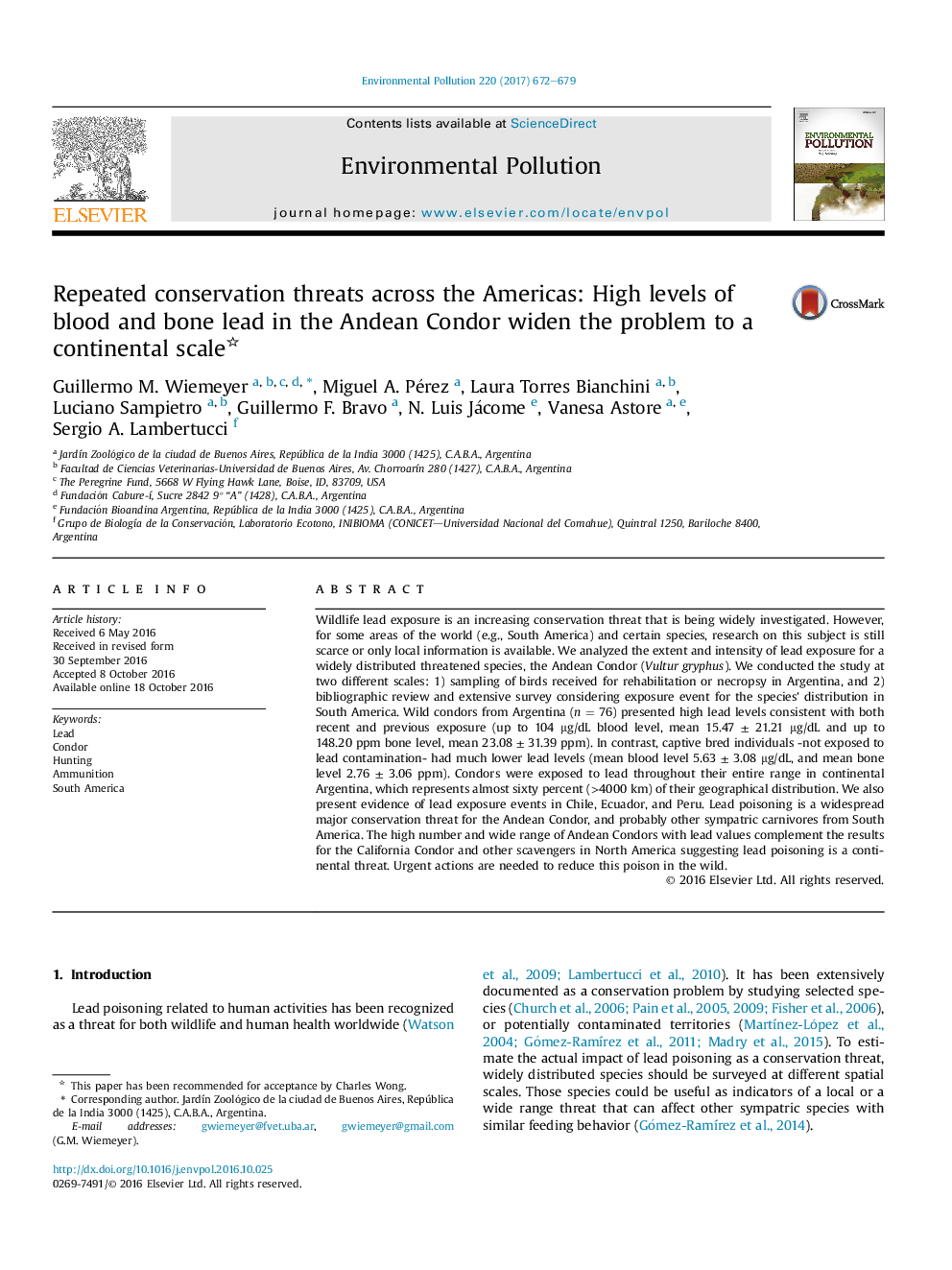| کد مقاله | کد نشریه | سال انتشار | مقاله انگلیسی | نسخه تمام متن |
|---|---|---|---|---|
| 5749262 | 1412476 | 2017 | 8 صفحه PDF | دانلود رایگان |
- Lead levels in Andean Condor indicate both previous and current exposure in Argentina.
- X-rays showed that a quarter of birds presented embedded or ingested lead bullets.
- Bone and blood lead poisoning is a conservation threat for the Andean Condor.
- Lead exposure was documented throughout most of condor range in South America.
- Our results widen the problem of scavengers' lead contamination at a continental scale.
Wildlife lead exposure is an increasing conservation threat that is being widely investigated. However, for some areas of the world (e.g., South America) and certain species, research on this subject is still scarce or only local information is available. We analyzed the extent and intensity of lead exposure for a widely distributed threatened species, the Andean Condor (Vultur gryphus). We conducted the study at two different scales: 1) sampling of birds received for rehabilitation or necropsy in Argentina, and 2) bibliographic review and extensive survey considering exposure event for the species' distribution in South America. Wild condors from Argentina (n = 76) presented high lead levels consistent with both recent and previous exposure (up to 104 μg/dL blood level, mean 15.47 ± 21.21 μg/dL and up to 148.20 ppm bone level, mean 23.08 ± 31.39 ppm). In contrast, captive bred individuals -not exposed to lead contamination- had much lower lead levels (mean blood level 5.63 ± 3.08 μg/dL, and mean bone level 2.76 ± 3.06 ppm). Condors were exposed to lead throughout their entire range in continental Argentina, which represents almost sixty percent (>4000 km) of their geographical distribution. We also present evidence of lead exposure events in Chile, Ecuador, and Peru. Lead poisoning is a widespread major conservation threat for the Andean Condor, and probably other sympatric carnivores from South America. The high number and wide range of Andean Condors with lead values complement the results for the California Condor and other scavengers in North America suggesting lead poisoning is a continental threat. Urgent actions are needed to reduce this poison in the wild.
Journal: Environmental Pollution - Volume 220, Part A, January 2017, Pages 672-679
